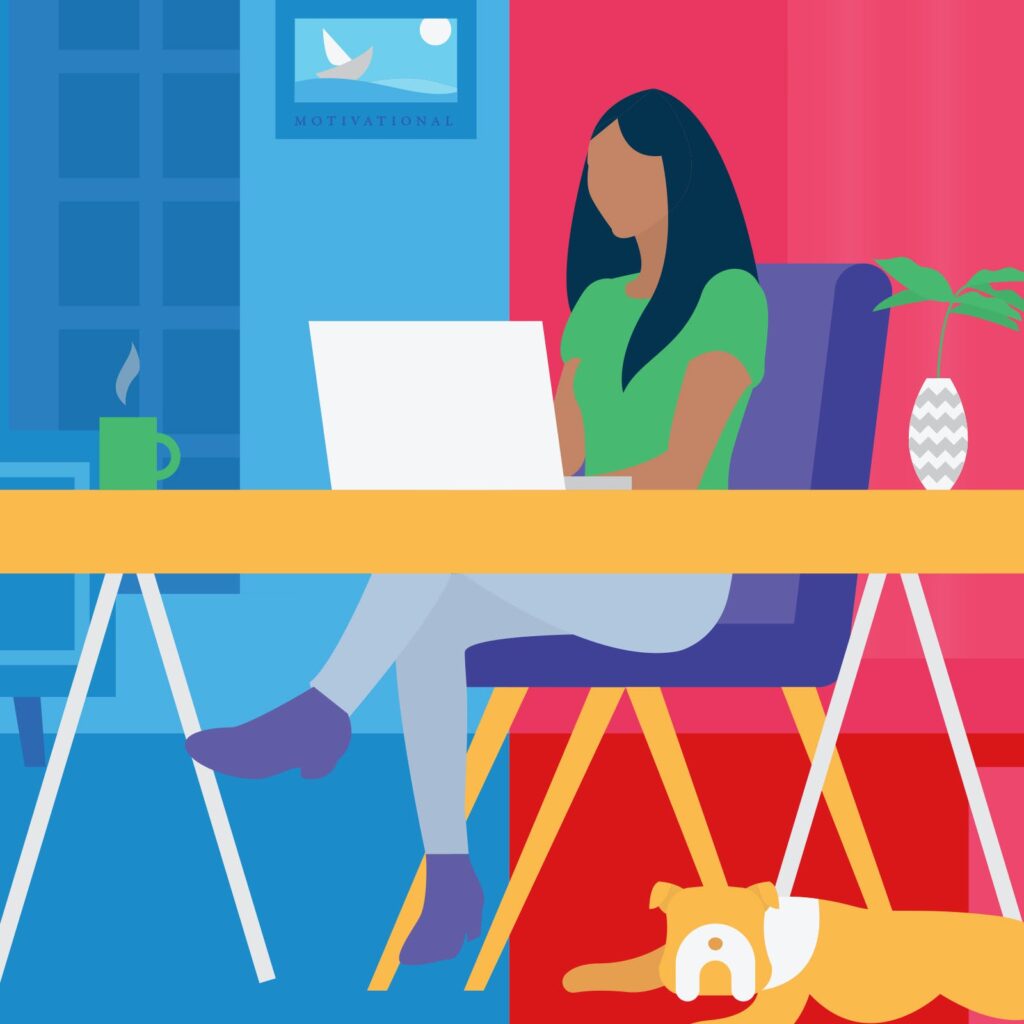The Ultimate YouTube Advertising Guide
BY THE NUMBERS YouTube is one of the largest search engines, second only to its…

How do you maintain “business as usual” when shifting your work environment / working from home (WFH)?
![]()
Establish a Routine: (Amy Elking) Establishing a routine is important for your general health and wellbeing, and can impact the amount/quality of sleep you get. Get out of bed, workout, shower, get dressed, and grab a cup of coffee. Getting into a mindset that this is a normal workday will help you stay organized and eliminate distractions like TV or laundry. Morning isn’t the only time for routines. Give yourself a scheduled lunchtime in a different space than your work setup.
![]()
Your Environment Matters: (Alexis Hippler) Set up an organized workspace that enables you to be as accessible as possible. Give yourself some privacy (as in a door you can close when you need to focus and when you are on video calls to limit interruptions). Keep your workspace tidy, organized and well-lit. We’ve found that the lighting you use can have a bigger impact than you think.
![]()
Keep Moving: (David Lee) Get up and stretch! Most are missing the office chatter, walking to grab a coffee, etc. Stretching twice a day (or a few sit-ups/push-ups) for a few minutes can help relieve some of this new bottled up energy. Don’t forget to take breaks to not only stretch, but also relax your eyes (eye strain is real) or grab a snack or drink too. A quick walk with the dog or steps to the mailbox are also a great break to get you up from your workspace.
![]()
Maintain Office Communication… Digitally: (Mark Hughes) Mimic in-person dynamics wherever you can – small talk, post-meeting sidebar convos, etc. Proactively “mingle” digitally with your team members. Additionally, this is a great time to use the discomfort of remote dynamics to candidly and transparently voice feelings/thoughts. Open up honest communication lines and identify process pain points hindering you from doing your best work. Recap conversations in written form where possible to cut off the barrier of someone not being able to physically turn around and ask you instantly “what did you say back there?”
![]()
Set Boundaries: (Hannah Brown) Create clear boundaries between work and personal time. Next thing you know, you’re working 15 hour days because it’s that easy to never close your laptop while sitting at home. Try a physical boundary – once you’re done working for the day, turn off the lights in the office and don’t go back in the room until the next day. This helps signal to your brain that it’s time to shift into whatever comes after work. Make sure you do something that can help your mind transition from work into off-time mode like taking a walk or preparing dinner.
![]()
Embrace It: (Riley Vollmer) Use the flexibility in your working dynamics to translate to the flexibility in how you deliver work and interact with others. This dynamic allows you to flex problem-solving and collaboration skills in a different way that presents insightful pros and cons. There’s a lot of taboo/fear about potentially being too informal in the workplace – like god forbid your boss learns you do laundry during the day too – but sometimes there’s a level of that that leads to enhancing workflow and interaction when you break down those irrationally corporate barriers.
![]()
Video Call Etiquette: (Andy Nolan) Be aware of your surroundings. Clean + good lighting + noises/sounds. Mute and switch on/off video when appropriate (to limit distractions). Take notes (digitally or with a notepad). Don’t multitask – distractions at home are more tempting – give your coworkers your full attention. Turn your camera on and be as much of a living breathing human digitally as you can.
![]()
Make Room for Some Distractions: (Lauren McGregor Downs) If there is a small chore that is driving you nuts and preventing you from focusing, just go do it! Need to unload/reload the dishwasher so you have pans to cook in tonight? Do it! Have laundry that needs to move to the dryer? Move it! Someone at your front door? Answer it! Kids screaming? Check on them! All in all, spending 10 minutes in your workday to tackle these distractions will allow you to be more productive without that nagging feeling that you need to accomplish something around the house as well.
![]()
Maintain Empathy Toward Others: (Ryan Hughes) Just because you can’t see someone working hard doesn’t mean they’re not. In fact, research has shown that not only are people more productive remote, they also tend to work more than if they weren’t. When you can’t see that your coworkers are heads down with headphones on cranking away or in a meeting with some others talking about something, it’s super easy to get annoyed when someone doesn’t respond to your message “quick enough” or seemingly ignores you altogether. Maintaining this empathy that you’re not the only one with shit to do becomes super important in a remote environment since chances are; it’s not that people aren’t working, it’s that they have other priorities… and it’s not you.
![]()
Give Your Brain a Change in Scenery: (Dave Berning) In an office environment, you’ll traverse between working at your dedicated workspace and meeting rooms. This change of scenery is nice to break up the day and can change how you process things. Contrast that to WFH, it’s easy to not leave the room or chair for dozens of hours. Don’t be afraid to change your environment when you’re heads down working and when joining calls. Give yourself the space and privacy you need to bust out work, but try wandering into a different room away from multiple monitors if joining an important conference call so you can be completely plugged in vs. being tempted to multi-task.